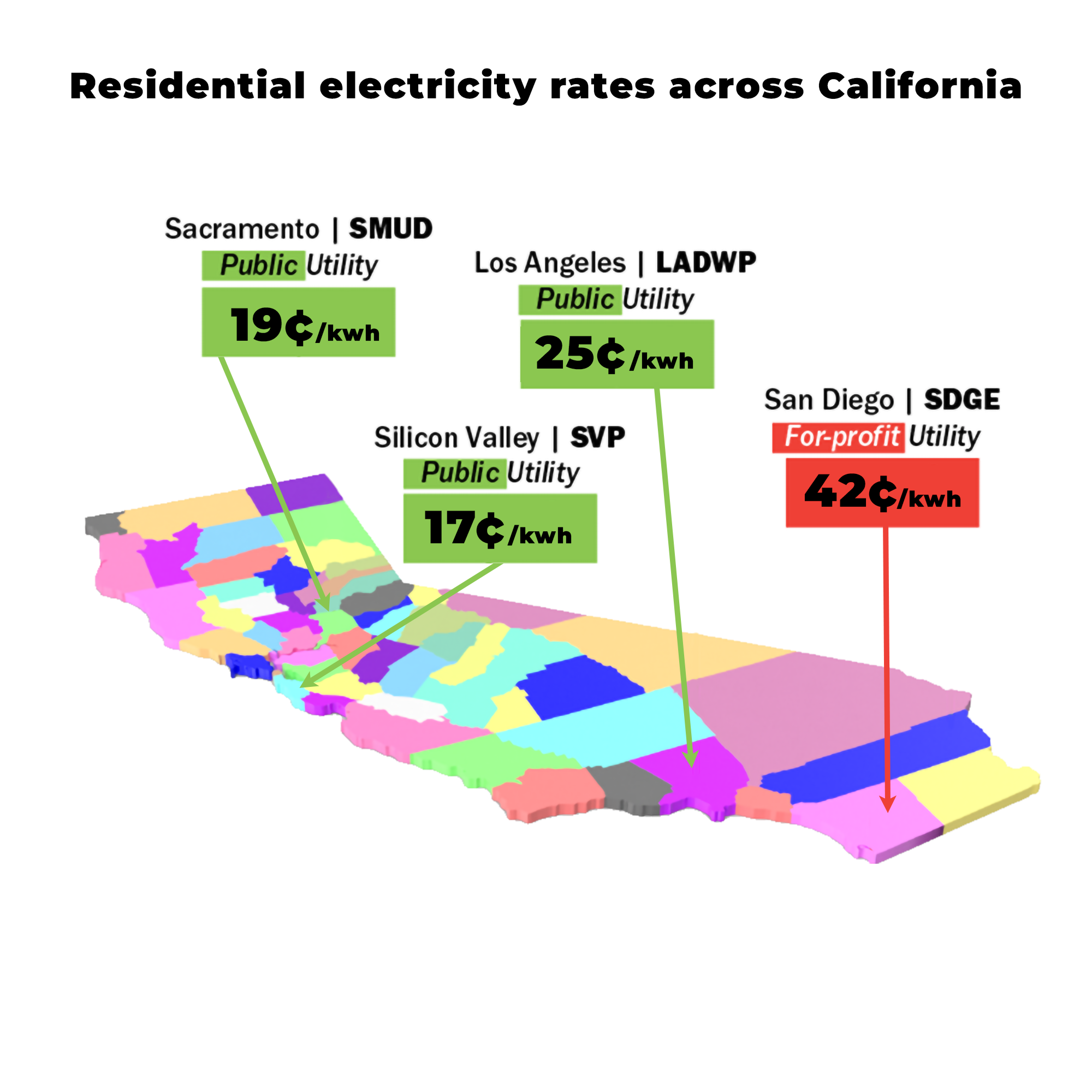The People’s Choice: Public Power Is a Winner!
“Those attending the Voice of San Diego’s Politifest Solutions Showdown last weekend got to hear competing views on how to lower skyrocketing electricity prices. And then attendees voted on the most persuasive case. The winner? Not-for-profit public power!”
City Leaders Mislead: Public Power Worth Tens of Billions More
“A key report meant to inform the City Council following its approval of a multi-billion dollar franchise agreement with San Diego Gas & Electric drastically understated the value of the alternative to that agreement, namely, shifting to a non-profit public utility.
While the flawed report noted that the city would save up to $15 billion by replacing SDGE with a non-profit utility, the savings should have been estimated at more than five times that amount, with $90 billion or more in savings in the coming decades from taking profit out of the local utility business.”
San Diegans pay among the highest electric rates in the country. Even worse, the rates are proposed to rise each year for the next three years.
If you think your bills are high now, they will only be going up from here under SDGE.
Public Power San Diego advocates for a community-owned, independently run, no-profit electric utility committed to locally produced and distributed clean and sustainable energy.
Public Power Will Provide:
Lower Costs
Local Control
Clean Energy
How Do We Achieve Public Power?
The only way we get this done is with your help. This is a David vs Goliath battle.
We’re a seasoned team of San Diegans with deep experience in organizing, engineering, and movement building. Public Power San Diego is the educational engine behind the growing Public Power movement in San Diego. Our mission is to educate San Diegans about what Public Power is, why it matters, and how it can secure an affordable future for generations to come.
Our long-term goal is to launch a citizens’ ballot initiative, get the initiative on the ballot, and win the vote for Public Power. To do that, we’ll need to build a volunteer army ready to gather more than 125,000 signatures.
With your support, this isn’t just possible—it’s inevitable.
If you’d like to learn more or get involved, sign up for our email list.
